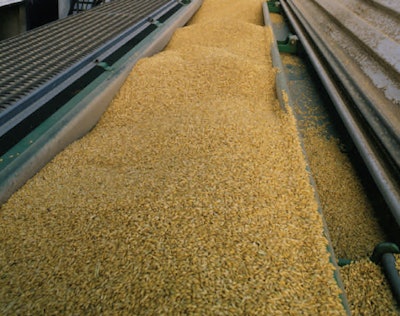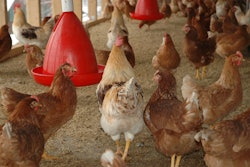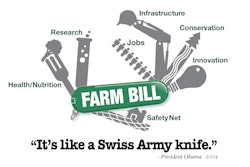
To the East, however, things will be easier: Corn and soybean production will only be up by 56M bushels across Michigan, Ohio, and Pennsylvania, and that follows short crops in 2015. Further south, crops are up about 120M bushels in the three Delta states of Arkansas, Loiusiana and Mississippi, after a big increase in corn acres this year.
The good news is that harvest stretches from August through November, and on average, the U.S. grinds, feeds, crushes and exports nearly 60 million bushels every day. That is the equivalent of creating 7 billion bushels of “space” by the end of a four-month harvest.
The harvest crunch will vary by region, but that’s just the beginning of the story. U.S. 2016 crop disappearance of the four listed crops will be a record high 21.3B bushels, up 1.2B from 2015 crop. That means the overall demands on the U.S. handling and transportation sectors will be up 5.8% over 2015 crop: Exports will be up 400M bushels, with domestic usage up nearly 800M bushels — mostly in feed consumption. U.S. agribusinesses will have to move about 100M more bushels every month (on average) than they did in 2015 crop, the previous record high. Managing logistics and freight will become even more important to your bottom line.
But that’s still not the end of the story. USDA currently projects ending carryover stocks into 2017 crop will also be a new record high 5B+ bushels, up almost 650M bushels over this summer (excluding the CCC years). Elevators have to ship more bushels than ever during this crop year, and will still go into 2017 crop with less available space than this year! Those stocks won’t be distributed evenly, just as they weren’t going into 2016 crop. The current surpluses in Iowa, Kansas and Nebraska will flow right into 2017 crop, with East Corn Belt states likely to show only minimal increases in their carryovers.
The Western Corn Belt and Plains will have the biggest challenges for at least another year, and as soon as this harvest wraps up, it’s time for managers everywhere to start on your merchandising and transportation plans for the season. Maximizing basis gains is always important, but managing logistics well will be critical. Big volumes mean you at least have a chance at big profits. Empty bins earn you nothing ...




















